
- SMU Libraries
- Scholarship & Research
- Teaching & Learning
- Bridwell Library
- Business Library
- DeGolyer Library
- Fondren Library
- Hamon Arts Library
- Underwood Law Library
- Fort Burgwin Library
- Exhibits & Digital Collections
- SMU Scholar
- Special Collections & Archives
- Connect With Us
- Research Guides by Subject
- How Do I . . . ? Guides
- Find Your Librarian
- Writing Support

Research Assignment Design: Overview
- Student Learning Outcomes
- Evaluating Student Work
- Generative AI
Prioritize your learning outcomes
Students can't do it all. Pick what to focus on. For the beginning researcher, research can be a complicated process with many steps to master effectively. Your assignment might want to prioritize some of those over others.
Students experience a greater cognitive load when researching because they lack domain knowledge. You can help students focus their energies by ensuring your assignment matches your priorities.
For example, to prioritize synthesizing arguments, design an assignment around reading and writing with sources, and limit the need for finding sources. To prioritize identifying the scope of research on a topic, require searching for sources.
How do I do this?
- Determine and prioritize learning goals specific to the research process .
- Imagine a student working through the assignment. Are there parts of it that demand a lot of work, but that don't match your priorities? If so, rethink the assignment.
Focus on the research and writing process
Prompts should address both the steps along the way (picking a topic, collecting data, synthesizing sources) and the completed assignment. When instructions focus only on the final product, students will view them as a checklist to complete.
For example, requiring a certain number of sources for a paper directs students' attention to the end product. Students will pick the first sources they find, rather than understanding the process of finding many possible sources, then selecting the best ones.
- Give clear and concise directions, with explanations and examples, about why you want something a certain way.
- Make learning objectives explicit, and provide feedback for each step of the research experience.
- Provide opportunities for students to reflect on their learning.
- Allow students time to explore and reframe as they research.
- Discuss how students will know they've found enough information.
Scaffold learning
Break down and explicitly teach the different aptitudes students need to be successful. Research can overwhelm students, especially those new to the process or discipline.
- Break your assignment down into smaller tasks to ensure that students reach learning objectives successively and successfully.
- Approach this as an opportunity to help students develop research skills. Don't assume students already know how to do research. Learning is iterative, so even if they've had a library research session, a review is useful.
- Recognize the emotional toll of research and give students the time they need to experience the full spectrum of feelings, as part of the instructional design.
- Provide worksheets, handouts, or activities that help students navigate specific aspects of the research process.
- Assist students over common stumbling blocks. What will get them past bottlenecks to learning in your discipline?
Create an authentic learning experience
Make your assignment relevant to real life experiences and skills. Students learn best and successfully transfer what they're learning when they connect with the assignment, feel the excitement of discovery, or solve challenges. Through disciplinary and experiential learning, students develop different perspectives from which to view the world.
- Encourage curiosity. Give students the chance to experience some of the messiness of research, while limiting how far off track they can get through periodic check-ins.
- Show students how to practice reading, research, and writing in your discipline. All these require interrelated, separate skills.
- Address how students can transfer knowledge and skills.
- Consider problem-based learning, have students examine real-world issues.
Need More Help?
Ways librarians can help.
- Discuss your learning objectives and options for assignments with you
- "Test-drive" your assignment to ensure students will be successful
- Identify why students struggle and how to help them
- Ensure appropriate resources are available
- Identify library instructional resources to link in Canvas
- Provide research instruction for your class
- Research Assignment Stipend Support for your collaboration with a librarian on a new assignment.
- How to Write an Effective Assignment Harvard University Derek Bok Center for Teaching and Learning
See Example Assignments
- Introductory Research Paper Prompt
- Executive Summary Assignment
- Next: Student Learning Outcomes >>
- Last Updated: Mar 22, 2024 3:15 PM
- URL: https://guides.smu.edu/research_assignments
Effective Research Assignments
- Best Practices
Alternative Research Assignments
Collaboration & discussion through blogs & wikis, topic exploration with online forums.
- Studies on Student Research
Beyond the Traditional Research Paper
Many instructors experience frustrations with standard research papers .
This page offers some alternatives.

These resources give examples of research assignments that take many forms.
- Community of Online Research Assignments (CORA)
- Sample Assignments (Oregon State University Libraries)
- Term Paper Alternatives (King's College)
Please let us know if you have additional assignments to share!
Blogs: Though a class blog, students might reflect on and dialogue about specific aspects of their research process.
Potential blog topics might include:
- describing one's chosen research topic, why it interests her/him, and why others should care about it,
- identifying a source that has expanded or challenged thinking about the research topic, or
- describing how one's research question has evolved over the course of their research.
Wikis: Students doing collaborative research might develop and revise their ideas through a wiki (like those available through CourseDen or platforms like Wikispaces ).
Wiki pages can be organized based on different areas of the student's research topic, or on different aspects of the research process. Potential sections within a wiki could include:
- emerging research questions,
- background information (such as differing perspectives on the research question),
- the working thesis, and
- key sources and how they inform the research.
Online platforms like Twitter, blogs, and other online networks can be good springboards for exploring how a topic has been discussed in a certain discipline or community.
Possible activities include:
- Students examine how different communities (including academic and non-academic ones) converse, share, or create information through social media and other online forums (e.g. blogs, online networks).
- Students use platforms like Twitter to gain perspective on how a given community or discipline discusses a certain topic or issue. Students compare how the "conversation" is represented differently in other mediums with which that community engaages (e.g. publications, blogs, conferences).
- Students compare how discussions in specific online communities compare to those that occur through other modes of communication (e.g. in-person discussions, conferences, academic journals, the popular press, magazines). Students might then reflect on how these various communication channels may inform their own approaches to researching a specific issue.
- << Previous: Best Practices
- Next: Studies on Student Research >>
- Last Updated: Oct 20, 2022 8:56 AM
- URL: https://libguides.rowan.edu/research_assignments
Find Info For
- Current Students
- Prospective Students
- Research and Partnerships
- Entrepreneurship and Commercialization
Quick Links
- Health and Life Sciences
- Info Security and AI
- Transformative Education
- Purdue Today
- Purdue Global
- Purdue in the News
May 24, 2024
Purdue, Google announce sustainability and AI research partnership
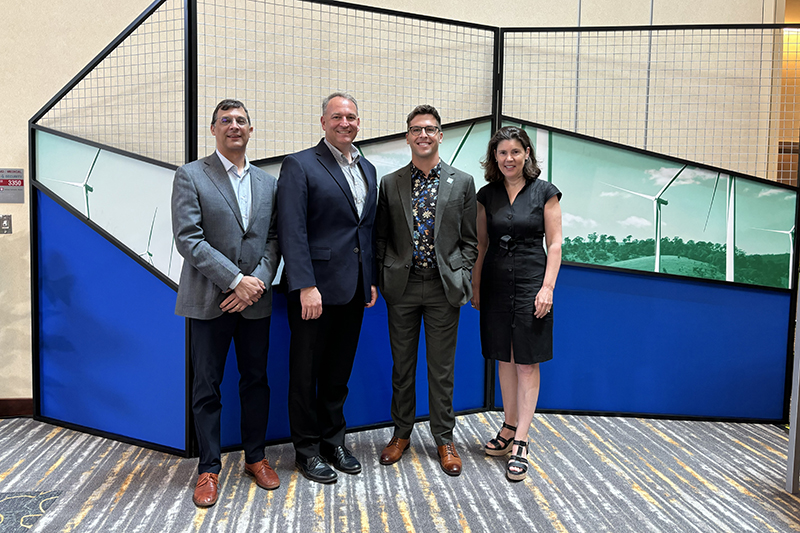
Purdue University and Google announced a partnership that seeks to develop innovative solutions for eco-friendly industrial buildings. Left to right: Joe Sinfield, civil engineering professor and director of Purdue’s Institute for Innovation Science; Travis Horton, civil engineering professor; Ben Townsend, Google global head of infrastructure and sustainability; Alyssa Wilcox, Purdue senior vice president of partnerships and chief of staff. (Purdue University photo provided)
Collaboration seeks to develop innovative solutions for eco-friendly industrial buildings
WEST LAFAYETTE, Ind. — Purdue University and Google announced Thursday (May 23) a new collaborative research project aimed at exploring the use of AI to develop innovative solutions for low-carbon industrial building design. The project seeks to leverage AI’s power to explore new materials, technologies and design strategies that can significantly reduce the carbon footprint of industrial buildings, such as data centers, not only across the U.S. but globally.
“Google is committed to using AI to address some of the world’s most pressing challenges, including climate change,” said Ben Townsend, global head of infrastructure and sustainability at Google. “We are excited to partner with Purdue University on this important research project, which has the potential to accelerate the adoption of low-carbon building practices in the industrial sector.”
ADDITIONAL INFORMATION
- Purdue Computes
- Purdue University to offer Google Career Certificates for learning in-demand tech skills
Conventional construction processes and physical plant operations of industrial structures pose persistent challenges when builders seek to reduce greenhouse gas emissions. That’s one reason why Purdue and Google are partnering on research efforts to develop new, sustainable building design approaches.
One focus area will be to prioritize the use of low-carbon building materials. The partners said research findings from this collaboration will be shared with the wider research community and industry stakeholders, aiming to boost the adoption of sustainable building practices.
“By combining Purdue’s expertise in engineering and building science with Google’s cutting-edge AI capabilities, we aim to develop innovative solutions that can significantly reduce the carbon footprint of industrial buildings,” said Travis Horton, a professor in Purdue’s Lyles School of Civil Engineering who also holds a courtesy appointment in mechanical engineering. “This collaboration is a testament to our commitment to sustainability and our belief in the transformative potential of AI.”
AI is a foundational component of the Institute for Physical Artificial Intelligence , a Purdue Computes initiative.
The partners said AI has the potential to have a profound impact on industrial construction, as it could provide innovative applications of low-carbon building materials, which would support reducing operational costs and making progress on global sustainability goals.
“At Google we are committed to sustainability, and we believe that technology can play a critical role in reducing carbon emissions,” said Townsend, who earned bachelor’s and master’s degrees in civil engineering from Purdue.
Google, which owns and operates data centers all over the world, is continually examining systems, including innovative construction design processes, to reduce the carbon footprint of its facilities to ensure efficiency and eco-friendly construction.
“The potential to combine Purdue’s understanding of innovation and design processes with Google’s AI capabilities to enable highly efficient and scalable sustainable design foreshadows the far-reaching promise of AI to help society address its most complex challenges,” said Joe Sinfield, a professor in Purdue’s Lyles School of Civil Engineering and the director of Purdue’s Institute for Innovation Science.
About Purdue University
Purdue University is a public research institution demonstrating excellence at scale. Ranked among top 10 public universities and with two colleges in the top four in the United States, Purdue discovers and disseminates knowledge with a quality and at a scale second to none. More than 105,000 students study at Purdue across modalities and locations, including nearly 50,000 in person on the West Lafayette campus. Committed to affordability and accessibility, Purdue’s main campus has frozen tuition 13 years in a row. See how Purdue never stops in the persistent pursuit of the next giant leap — including its first comprehensive urban campus in Indianapolis, the new Mitchell E. Daniels, Jr. School of Business, and Purdue Computes — at https://www.purdue.edu/president/strategic-initiatives .
Writer/Media contact: Wes Mills, [email protected]
Source: Travis Horton

Research News
Communication.
- OneCampus Portal
- Brightspace
- BoilerConnect
- Faculty and Staff
- Human Resources
- Colleges and Schools
Info for Staff
- Purdue Moves
- Board of Trustees
- University Senate
- Center for Healthy Living
- Information Technology
- Ethics & Compliance
- Campus Disruptions
Purdue University, 610 Purdue Mall, West Lafayette, IN 47907, (765) 494-4600
© 2015-24 Purdue University | An equal access/equal opportunity university | Copyright Complaints | Maintained by Office of Strategic Communications
Trouble with this page? Disability-related accessibility issue? Please contact News Service at [email protected] .
Sustainable computing project awarded $12 million from NSF
Multi-institution research initiative aims to reduce computing’s carbon footprint by 45% within the next decade.

(Image generated by DALL-E)
A multi-institutional research initiative co-led by David Brooks , Haley Family Professor of Computer Science at the Harvard John A. Paulson School of Engineering and Applied Sciences (SEAS), has been awarded $12 million over five years by the U.S. National Science Foundation for its “potential to revolutionize computing and make significant impacts in reducing the carbon footprint of the lifecycle of computers”.
The initiative, co-led by Benjamin Lee, professor in the Department of Electrical and Systems Engineering and the Department of Computer and Information Science at the University of Pennsylvania’s School of Engineering and Applied Science (Penn Engineering), aims to lay the foundations for sustainable computing.
“Despite recent advances to achieve net zero carbon emissions, the computing industry’s gross energy usage continues to rise at an alarming rate, outpacing the growth of new energy installations and renewable energy deployments,” said Brooks. “For more sustainable computing, we need to rethink computing’s infrastructure, from semiconductor chips to hyperscale data centers, with the goal of mitigating carbon costs from hardware and operations."
For more sustainable computing, we need to rethink computing’s infrastructure, from semiconductor chips to hyperscale data centers, with the goal of mitigating carbon costs from hardware and operations.

“Our goal is to redefine the way researchers in computing consider environmental sustainability and establish new standards for carbon accounting in the computing industry to influence future energy policy and legislation,” said Lee.
Co-PIs at SEAS include Gu-Yeon Wei, the Robert and Suzanne Case Professor of Electrical Engineering and Computer Science, Minlan Yu, the Gordon McKay Professor of Computer Science and Gage Hills, Assistant Professor of Electrical Engineering.
The initiative, named the “NSF Expeditions in Computing: Carbon Connect -- An Ecosystem for Sustainable Computing”, will pursue three main goals.
First, the team will create standardized protocols to accurately measure and report carbon costs across the entire lifetime of a device, from manufacturing to recycling, including the day-to-day footprint of systems operating in the field.
“Measuring carbon is a prerequisite for developing technical solutions for more sustainable computing, but today’s carbon estimates are produced by opaque methods and accompanied by large error bounds,” said Brooks. “We cannot optimize what we do not understand.”
Next, the team will develop tools and strategies to reduce computing’s carbon footprint by 45% within the next decade. These innovations will include energy-efficient hardware design, advanced hardware recycling and disposal strategies, and the intelligent use of renewable energy to reduce operational carbon from datacenters.
Finally, Carbon Connect Expedition team will look to the future and explore solutions to reduce carbon for fast-growing applications over the next decade, namely artificial intelligence and virtual reality systems.
“To reduce overall carbon costs and deliver sustainable performance for future artificial intelligence and virtual reality systems, engineers and computer scientists need to work together and come up with intelligent compromises to balance embodied and operational carbon,” said Lee.
Carbon Connect Expedition is one of three projects chosen by the U.S. National Science Foundation Expeditions in Computing (Expeditions) program, an initiative that supports transformative research poised to yield lasting impacts on society, the economy and technological advancement. Collaborators of this project include University of Pennsylvania, California Institute of Technology, Carnegie Mellon University, Cornell University, Yale University, and Ohio State University.
Topics: Climate , Computer Science
Cutting-edge science delivered direct to your inbox.
Join the Harvard SEAS mailing list.
Scientist Profiles
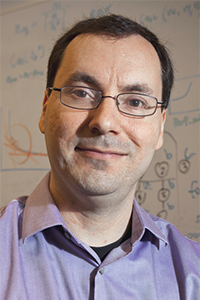
David Brooks
Haley Family Professor of Computer Science
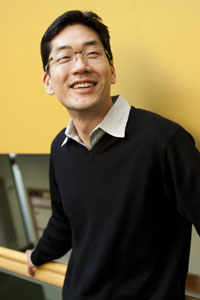
Gu-Yeon Wei
Robert and Suzanne Case Professor of Electrical Engineering and Computer Science
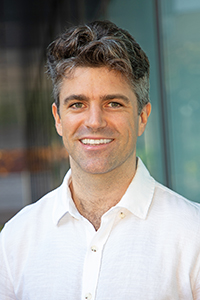
Assistant Professor of Electrical Engineering
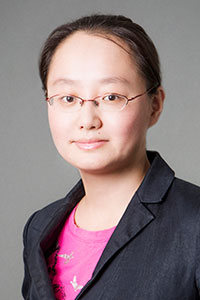
Gordon McKay Professor of Computer Science
Press Contact
Leah Burrows | 617-496-1351 | [email protected]
Related News
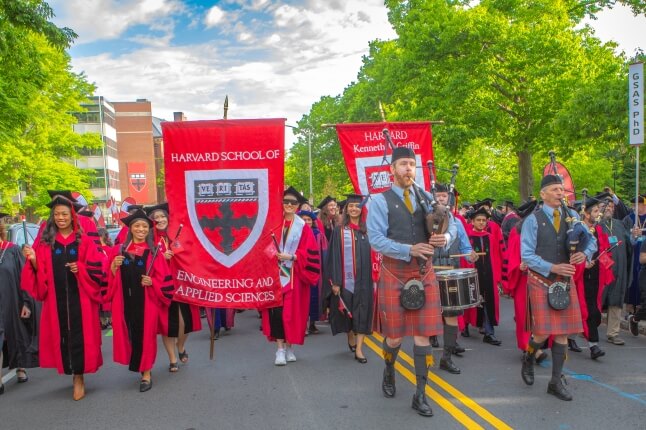
2024 Commencement photos
Images from the 373rd Harvard Commencement on Thursday, May 23
Academics , Applied Computation , Applied Mathematics , Applied Physics , Bioengineering , Computer Science , Environmental Science & Engineering , Events , Materials Science & Mechanical Engineering , Robotics
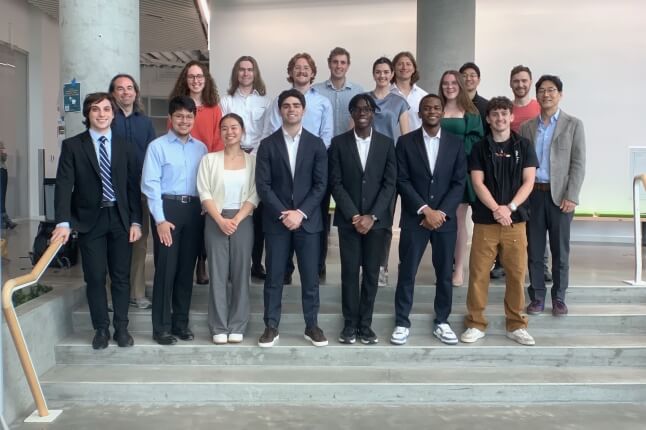
A sustainable future for data centers
SEAS students tackle the engineering implications of the ever-increasing need for data centers
Academics , Climate , Computer Science , Electrical Engineering , Environmental Science & Engineering , Materials Science & Mechanical Engineering

SEAS at CHI
SEAS teams win Best Paper, honorable mentions at international conference on Human-Computer Interaction
AI / Machine Learning , Computer Science
Opinion The problem with diversity statements — and what to do about them
DEI statements have too often led to self-censorship and ideological policing.

As the United States reckoned with racial inequality during and after the 2020 Black Lives Matter protests, many saw Diversity, Equity and Inclusion (DEI) programs as a way to address the issues in higher education. As part of the trend, many schools began requiring candidates for teaching positions to submit DEI statements. In these statements, potential hires explain how they would advance diversity, equity and inclusion in their teaching and research activities. One 2021 study found that about one-third of job postings at elite universities required them.
Now, however, some in academia are starting to express second thoughts about this practice. In April, Harvard Law School professor Randall L. Kennedy urged abolition of DEI statements, arguing that they amount to “compulsion” and “ideological litmus tests.” Not long after Mr. Kennedy’s article appeared, the Massachusetts Institute of Technology became the first top university to voluntarily end their use. The decision came after extensive consultations among all six of the school’s academic deans. MIT’s president, Sally Kornbluth, explained : “We can build an inclusive environment in many ways, but compelled statements impinge on freedom of expression, and they don’t work.”

In doing away with DEI statements, MIT was not abandoning the goals of greater diversity, equity and inclusion, which remain not only valid but also vital. DEI programs can have an important place. They should not be abolished or undermined — as red states such as Florida and Texas have done, by forbidding the use of state funds for DEI in public universities. Reshaping universities via such a heavy-handed use of state power could set a dangerous precedent for academic freedom more generally.
And yet as a specific policy, DEI statements advance their declared objectives at too high a cost. In fact, they stoke what Mr. Kennedy, a self-described “scholar on the left,” who formerly served as a law clerk for Justice Thurgood Marshall, called “intense and growing resentment” among academics. Not surprisingly, 90 percent of self-described conservative faculty view the statements as political litmus tests, but so do more than 50 percent of moderates and even one-quarter of liberals, according to a survey by the Foundation for Individual Rights and Expression, a nonpartisan watchdog group specializing in campus free speech issues.
Because the criteria for acceptable DEI statements are often vague, jobseekers must do the work of anticipating the ideological and political preferences of university administrators and faculty, who are disproportionately left-leaning . The MIT Communication Lab, for instance, explained that a diversity statement is an “opportunity to show that you care about the inclusion of many forms of identity in academia and in your field, including but not limited to gender, race/ethnicity, age, nationality, sexual orientation, religion, and ability status” and notes “it may be appropriate to acknowledge aspects of your own marginalized identity and/or your own privilege.” Harvard University’s Bok Center for Teaching and Learning included a list of guiding questions including, “Do you seek to identify and mitigate how inequitable and colonial social systems are reinforced in the academy by attending to and adjusting the power dynamics in your courses?”
Yet jobseekers who disagree with the ideological premises of such inquiries have an overwhelming incentive to suppress their true beliefs, or pretend to have the “right” ones, lest they be eliminated from consideration. It’s a dilemma, especially given the high stakes: As the University of California at Davis’s vice chancellor for DEI explained, “In these searches, it is the candidate’s diversity statement that is considered first; only those who submit persuasive and inspiring statements can advance for complete consideration.” In one faculty search at University of California at Berkeley, around 75 percent of applicants were screened out of consideration — irrespective of criteria such as teaching ability and research skills. Small wonder that many applicants engage in what Daniel Sargent, a history professor at UC Berkeley, calls “ performative dishonesty .”
The last thing academia — or the country — needs is another incentive for people to be insincere or dishonest. The very purpose of the university is to encourage a free exchange of ideas, seek the truth wherever it may lead, and to elevate intellectual curiosity and openness among both faculty and students. Whatever their original intent, the use of DEI statements has too often resulted in self-censorship and ideological policing. Fundamentally reconsidering them could actually strengthen DEI, by placing it on a more sustainable basis — intellectually and politically. MIT is one of the first to tackle the issue; here’s hoping it won’t be the last.
The Post’s View | About the Editorial Board
Editorials represent the views of The Post as an institution, as determined through discussion among members of the Editorial Board , based in the Opinions section and separate from the newsroom.
Members of the Editorial Board: Opinion Editor David Shipley , Deputy Opinion Editor Charles Lane and Deputy Opinion Editor Stephen Stromberg , as well as writers Mary Duenwald, Shadi Hamid , David E. Hoffman , James Hohmann , Heather Long , Mili Mitra , Eduardo Porter , Keith B. Richburg and Molly Roberts .


IMAGES
VIDEO
COMMENTS
The Research Assignment Introduction. When tasked with writing a research paper, you are able to "dig in" to a topic, idea, theme, or question in greater detail. In your academic career, you will be assigned several assignments that require you to "research" something and then write about it. Sometimes you can choose a topic and ...
empowers students to focus on and to master key research and critical thinking skills, provides opportunities for feedback, and. deters plagiarism. Periodic class discussions about the assignment can also help students. reflect on the research process and its importance. encourage questions, and. help students develop a sense that what they are ...
A research paper is a piece of academic writing that provides analysis, interpretation, and argument based on in-depth independent research. Research papers are similar to academic essays, but they are usually longer and more detailed assignments, designed to assess not only your writing skills but also your skills in scholarly research ...
Research questions give your project a clear focus. They should be specific and feasible, but complex enough to merit a detailed answer. 2612. Writing a Research Paper Conclusion | Step-by-Step Guide The conclusion of a research paper restates the research problem, summarizes your arguments or findings, and discusses the implications. 882.
This article takes you through the first steps of the research process, helping you narrow down your ideas and build up a strong foundation for your research project. Table of contents. Step 1: Choose your topic. Step 2: Identify a problem. Step 3: Formulate research questions. Step 4: Create a research design. Step 5: Write a research proposal.
Professors assign academic research papers to give you experience in. finding and understanding data and information. formulating informed opinions through the study of what you found researching. adding your voice to the academic conversation of other writers and scholars in your field. learning how others in your field use primary and ...
Provide examples of topics that are appropriate in scope for the assignment at hand, and provide feedback to individual students as they begin to develop and refine their topics. Design and test your assignment. An effective research assignment targets specific skills, for example, the ability to trace a scholarly argument through the ...
Formal Research Structure. These are the primary purposes for formal research: enter the discourse, or conversation, of other writers and scholars in your field. learn how others in your field use primary and secondary resources. find and understand raw data and information. For the formal academic research assignment, consider an ...
Reading, Research, and Writing by Mary Snyder Broussard Through theory and examples, and with ACRL's Framework for Information Literacy for Higher Education integrated throughout, Reading, Research, and Writing: Teaching Information Literacy with Process-Based Research Assignments shows just how difficult research assignments can be for novice learners, and offers concrete plans and ...
Students experience a greater cognitive load when researching because they lack domain knowledge. You can help students focus their energies by ensuring your assignment matches your priorities. For example, to prioritize synthesizing arguments, design an assignment around reading and writing with sources, and limit the need for finding sources ...
Following the guidelines for this assignment and using the resources in this guide will help you to: gather information and sources on your topic, understand and evaluate those sources, engage deeply with new information that you find, and to notice and pursue connections among disciplines and ideas. Create a balanced research portfolio on the ...
Failure to delimit the contextual scope of your research [e.g., time, place, people, etc.]. As with any research paper, your proposed study must inform the reader how and in what ways the study will frame the problem. Failure to develop a coherent and persuasive argument for the proposed research. This is critical.
About Research Assignments. Most of your courses will require you to complete a research assignment of one kind or another. In general, the goal of a research assignment is to get you to gather information about a certain topic, analyze that information, and report what you've learned as part of a class presentation or research paper/essay.
The Research Paper. There will come a time in most students' careers when they are assigned a research paper. Such an assignment often creates a great deal of unneeded anxiety in the student, which may result in procrastination and a feeling of confusion and inadequacy.
Technology has both enhanced and challenged the design of library research assignments for college courses. On the one hand, technology facilitates access to an ever-expanding array of information that allows faculty to raise standards of excellence for library research. On the other hand, technology has created potential "shortcuts" to library ...
Research the origins, evolution, and reception history of a song. Research what is meant by 'style' and 'form' in music. Research the history of a musical instrument or voice type. Research musicianship as a cultural value. Designing Research Assignments from Drew University Library has many other ideas.
Alternative Research Assignments. These resources give examples of research assignments that take many forms. Community of Online Research Assignments (CORA) Sample Assignments (Oregon State University Libraries) Term Paper Alternatives (King's College) Please let us know if you have additional assignments to share!
Assignment handouts help students meet these challenges and are important when students seek help from librarians and tutors. Planning Checklist: Research Assignments Use this checklist to plan or revise research assignments.
Assignment is a task given to students by a teacher or professor, usually as a means of assessing their understanding and application of course material. Assignments can take various forms, including essays, research papers, presentations, problem sets, lab reports, and more. Assignments are typically designed to be completed outside of class ...
Alternative Assignments. There are many different types of assignments that can help your students develop their information literacy and research skills. The assignments listed below target different skills, and some may be more suitable for certain courses than others. Research Skills: Searching, Analysis, Evaluating Sources.
Purdue University and Google announced Thursday (May 23) a new collaborative research project aimed at exploring the use of AI to develop innovative solutions for low-carbon industrial building design. The project seeks to leverage AI's power to explore new materials, technologies and design strategies that can significantly reduce the carbon footprint of industrial buildings, such as data ...
Alex Bayen, a UC Berkeley professor of electrical engineering and computer sciences who helped lead the project to create the Berkeley Space Center at NASA's Ames Research Center in Mountain View, California, spoke about the potential benefits during a press conference at NASA Ames on Oct. 16, 2023. Brandon Torres for NASA Ames
MIT postdocs Marin Vogelsang and Lukas Vogelsang, and Project Prakash research scientist Priti Gupta, are the lead authors of the study, which appears today in Science. Sidney Diamond, a retired neurologist who is now an MIT research affiliate, and additional members of the Project Prakash team are also authors of the paper. Seeing in black and ...
A multi-institutional research initiative co-led by David Brooks, Haley Family Professor of Computer Science at the Harvard John A. Paulson School of Engineering and Applied Sciences (SEAS), has been awarded $12 million over five years by the U.S. National Science Foundation for its "potential to revolutionize computing and make significant impacts in reducing the carbon footprint of the ...
Binge drinking is a growing public health crisis − a neurobiologist explains how research on alcohol use disorder has shifted Published: May 13, 2024 8:17am EDT. Nikki ...
Step 1: Explain your methodological approach. Step 2: Describe your data collection methods. Step 3: Describe your analysis method. Step 4: Evaluate and justify the methodological choices you made. Tips for writing a strong methodology chapter. Other interesting articles.
In addition, the leading authors of up to five winning projects will be invited to attend an award ceremony at NeurIPS 2024 in Vancouver. Each submission must describe independent work wholly performed by the high school student authors. We expect each submission to highlight either demonstrated positive social impact or the potential for ...
In these statements, potential hires explain how they would advance diversity, equity and inclusion in their teaching and research activities. One 2021 study found that about one-third of job ...
For her senior capstone project, Teaghan McAllister researched plastic pollution within Carolina Chickadee bird nests on Warren Wilson's campus. Using 98 chickadee nests collected over three years from bird boxes around campus, Teaghan looked at both micro and macro plastics. After many hours in the lab, she concluded that more than 90% of ...
Only 22% say the cost of getting a four-year college degree today is worth it even if someone has to take out loans. Some 47% say the cost is worth it only if someone doesn't have to take out loans. And 29% say the cost is not worth it. These findings come amid rising tuition costs and mounting student debt. Views on the cost of college ...